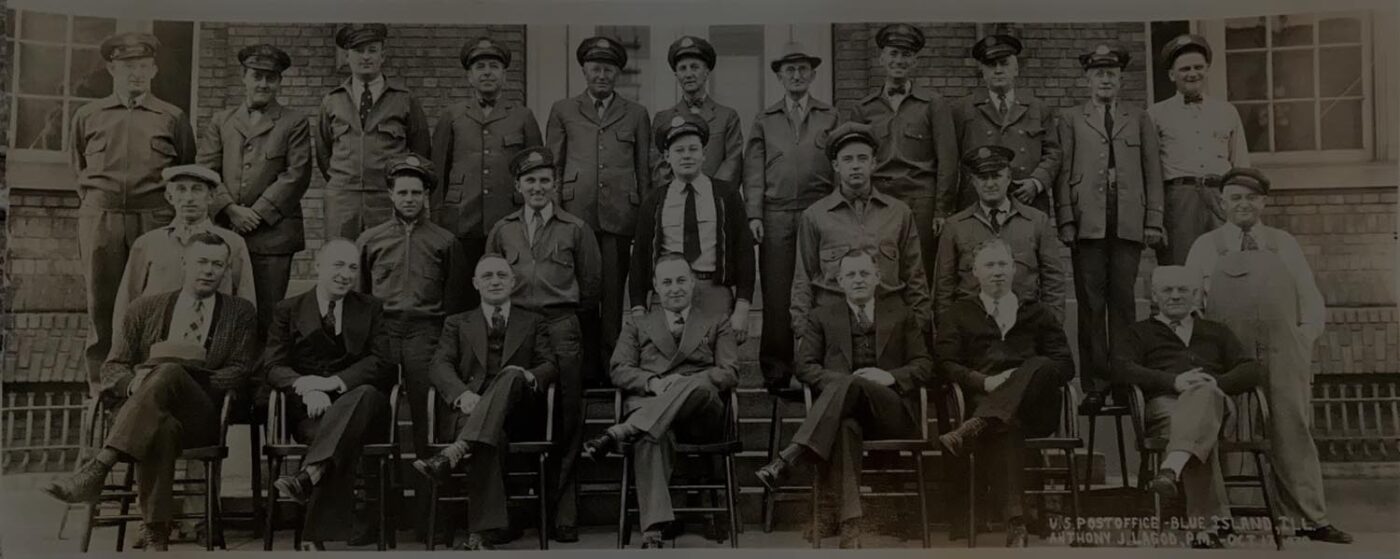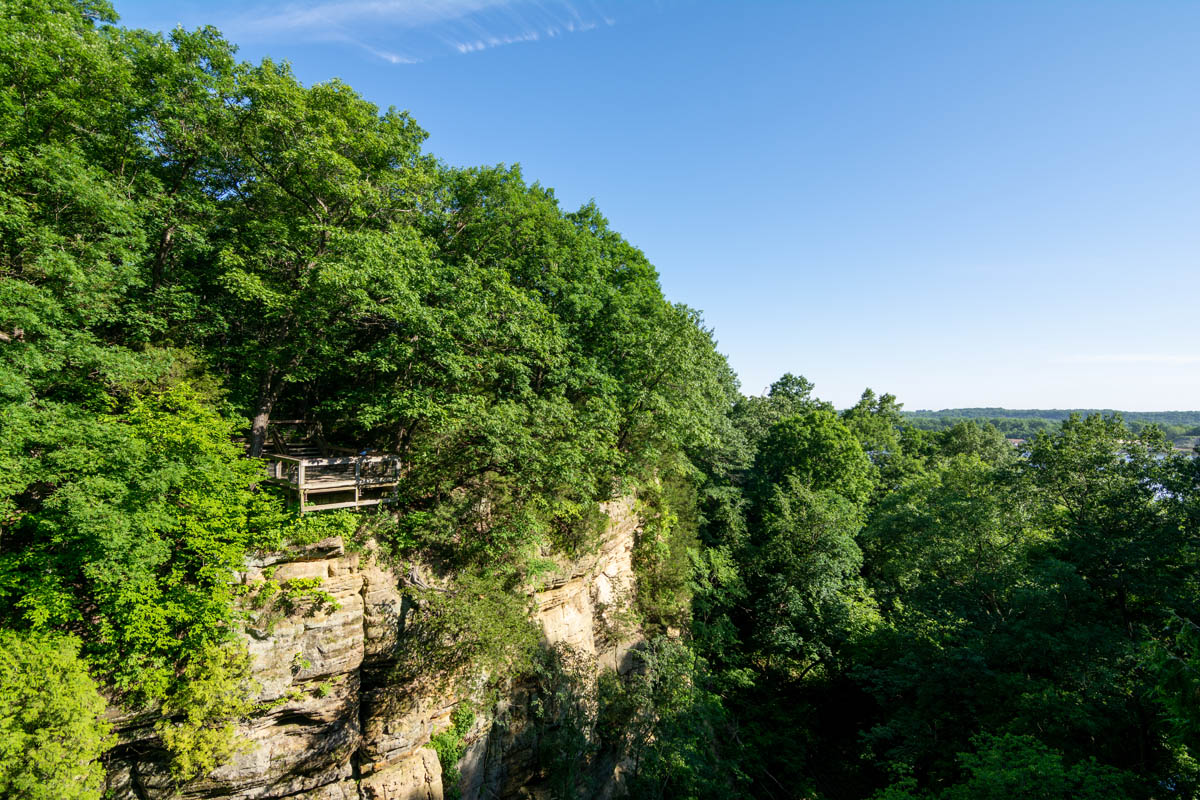Before the Illinois tribe was driven to Starved Rock where they were almost completely wiped out, there are stories of a great battle that took place in Blue Island along the Calumet River, where the Illinois made a determined effort to fight off their attackers – a group of tribes that included the Ottawa, Pottawatomi, Chippewa, Sauk, and Fox.
We’re working on some exciting things related to this battle site, but in the meantime, here are some more accounts from that battle, along with other brief excerpts of Native American activity in Blue Island taken from Ferdinand Schapper’s book on the history of Blue Island:
“On September 26th, 1833 the Pottawattomies, to about the number of seven thousand (7,000) were gathered in Chicago for the purpose of making a treaty ceding about twenty million (20,000,000) acres of land to the United States.
On September 9, 1835, Colonel 1. B. F. Russel advertised for forty ox teams, each to be composed of two yokes of oxen to remove the Indians to the country allotted to them in the West. On the first of October Colonel Russel started with the forty ox teams containing the children and baggage of the last remaining members of the red men, about 1,500 in all, and was about twenty days reaching the Mississippi; they were twenty days more reaching the land allotted to them west of the Missouri River.”
(Chicago Democratic Press, March 10, 1854)
“A large number of the Pottawattomies from the Calumet River have been for several days encamped near the residence of the late H. B. Clark, a short distance south of the River. Their tents gleaming in the twilight and the red glow of their camp fires and their blanketed forms passing here and there render it quite a border scene of earlier days.”
(Chicago Journal, March 29th, 1856)
In 1769 Pontiac, an Indian chief, was assassinated. The Pottawat-tomies, believing that the Illinois tribe of Indians, were accessory to the crime, associated with the Ottawas, Chippewas, Sauks and Foxes, waged a war upon them. The allied Indians were led by the war chief Sugar and the Illinois by their chief Big Elk. The Illinois were forced from point to point until they came to Blue Island, where they made a determined stand. A terrific battle took place, lasting several days, which resulted not only in the defeat of the Illinois, but in breaking up their army and in ignominious flight. A considerable portion of them fled to Hickory Creek near Joliet, where they were again overtaken and again defeated with great slaughter. From there they again fled down the Illinois River to a point where Morris now stands, when another struggle took place resulting in a victory for the allies. The Illinois then retreated to the high rock, now known as Starved Rock, where surrounded by their enemies they were practically annihilated.
(The above has been condensed from an article by P. A. Armstrong, an authority on the Indians of this State.)
The story of the Indian battle was first heard by me from an old trapper who lived with the Indians near the present Hegewisch at the forks of the Calumet River. He was in my father’s store in about 1856. His narrative was practically the same as related by Mr. Armstrong. He had heard the story from the Indians, whose ancestors had taken part in the fight. He stepped to the side door of the store and pointed out the battle field which was on the west bank of the Calumet River, just south of 135th Street, about where the Baltimore FK Ohio Terminal crosses the River. He said that the Illinois dead were left on the field, while the allies buried their dead on the hill south of Grove Street.
“Fayette D. Rexford says, in the early days, stone implements and weapons of all kinds used by Indians were found around the Rexford Tavern (on Western Avenue south of Grove St.) The top of the hill around Rexford and Grove Sts., the vicinity west, east, and south of Vermont St., the ground was covered with them.”
John Wolf, while digging a cistern southwest corner of Grove and Henry Sts., found skeletons and stone axes; H. B. Robinson found a large lower jawbone of a human body of extraordinary size; Mr. M. C. Eames stated that it would go over the outside of his jaw. The southern part of the Blue Island Hill at one time was also used as a burial place by the Indian. From about Ann and Grove Streets and as far east as Wabash St., skeletons, arrow heads, stone axes etc., were found in great numbers, When the Metz brewery cellars were excavated, the ground was literally full of human remains. Also when the Rock Island Railroad made its cut in the gravel deposits, skeletons, skulls, etc., were continually exposed. When a boy, I have many times dug out “Indian bones” as we called them, on Rexford Street and on Grove St. near Wabash. Wherever and excavation was made almost anywhere south of Vermont St., the graves would show as dark soil in the red gravel and the boys would scratch out the bones with a stick.
On the Brayton Farm a Corn Mill, etc., evidently of Indian origin, was found.
Another place close by where arrow heads, stone axes, and human bones were found in great numbers was on the west bank of the Calumet River south of 135th Street, about where the Terminal Railroad is at present, This place was the site of a battle between the Illinois Indians on one side and the Pottawattomies and their allies on the other. When I was a boy an Indian came from Chicago to this field every summer for several years and scratched through the plowed soil hunting arrow heads and stone axes, sometimes he found a basketful in a day. When the power house of the North Shore Electric Company was erected on this site, two Indian graves were found by Andrew Ward, in about 1910.
Skeletons and Indian axes were found in large numbers on the farm of David Andrews. In making excavations, human bones were found, apparently showing body to have been seven feet high. The Andrews farm was on the extreme southern part of Indian Ridge, near the present Wentworth Avenue and north of the Blue Island and Riverdale Road. This ridge was a burying ground of the Indians and their remains, and arrow heads, axes and other stone implements have been found there ever since whites resided there.
Alexander Reid, Sag Bridge in Lemont, found, (while plowing, about three or four rods from margin of the Sag) on south side of the Sag at a depth of ten or twelve inches, as he expressed it, about a bushel basket of arrow flints and about sixty to seventy stone axes of all sizes.
Early settlers in Thornton found on the site of the present Thornton village, ruins of what evidently had been an Indian strong hold. They consisted of outer trenches with inside fortifications on which grew trees, perhaps a hundred years old. It should be recorded, however, that Indians attributed these remains to French explorers.
*A special thank you to local historian Ken Jellema on his research assistance for this note.


